Definitions
When planning an IFR flight, the choice of a destination aerodrome, as well as alternate and diversion aerodromes en-route, is not only crucial for safety but is also subject to a series of operational criteria. These are divided by EASA into two complementary concepts :
- Suitable aerodrome : This refers to the available infrastructure and services required at the time of the potentially intended use of the airfield.
- Weather-permissible aerodrome : The legally required weather minima during a given period to plan an adequate aerodrome, including the condition of the runway surface.
To summarise, for an aerodrome to be planned, it must be adequate in all circumstances. Depending on its use, it must also be a weather-permissible aerodrome with variable criteria.
Criteria for an Adequate aerodrome- CAT.OP.MPA.107
The operator must ensure that a number of characteristics of the airfield comply with the operations in terms of safety and performance of the equipment.:
- Runways and taxiways (characteristics and dimensions)
- Legal restrictions (authorisation, crew)
- Performances (obstacles)
- Air Traffic Control (ATC)
- Lighting (runway and taxiway lamps)
- Weather reports (METAR/TAF)
- Navigation aids (published approaches)
- Rescue and Fire Fighting Service (RFFS)
This information is available in the AIP, but it is essential to check the NOTAMs for any additional restrictions, even temporary ones, that may exist. If applicable, these take precedence over the AIP.
Take-off minima - CAT.OP.MPA.110
PBefore takeoff, visibility must be sufficient to maintain the minimum visual reference necessary for controlling the aircraft during the takeoff roll, particularly in adverse conditions (interruption of takeoff, failure). The runway lighting must be operational at night and when the low visibility procedure is in effect at the aerodrome (Low Visibility Procedure) :
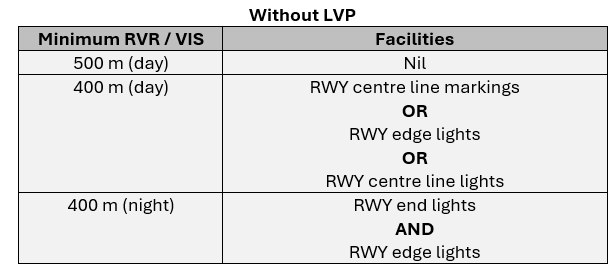
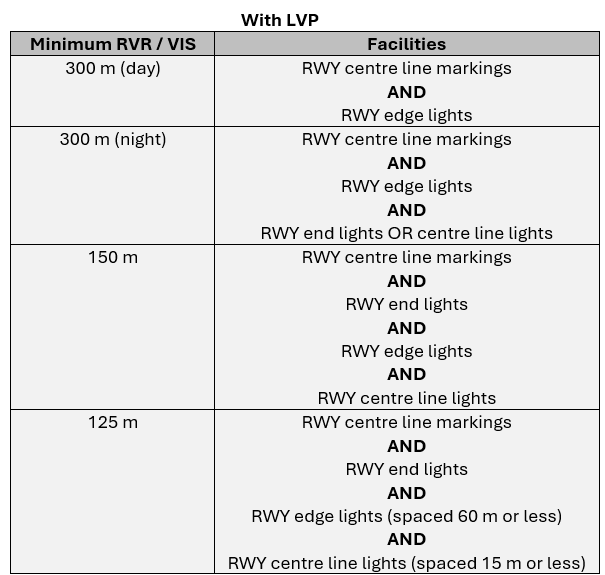
Landing minima
Determining the type of approach
The approaches are classified into 2 types according to the table below based on navigation aids and minima :
- Type A > MDH/DH equal to or greater than 250 ft
- Type B > DH less than 250 ft
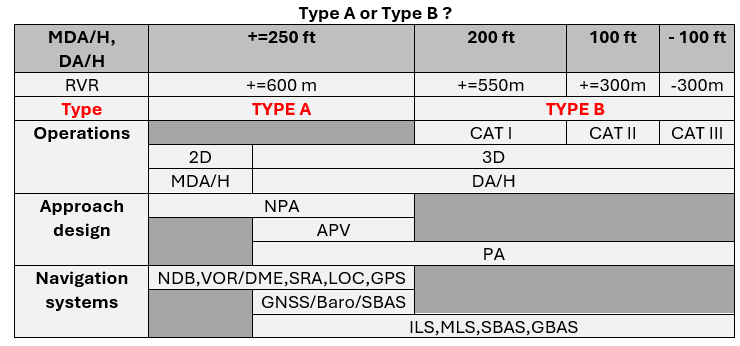
To determine what type of approach it is, the following process must be followed :
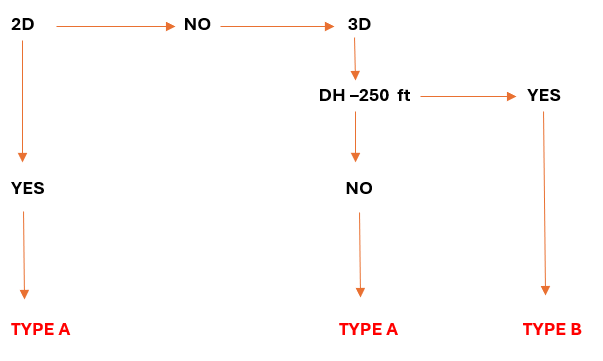
Note: For further explanations on the minima for IFR approaches, please refer to section 5.3 Minima & Categories of the IFR course.
Aerodrome operational minima - CAT.OP.MPA.110
The minima vary depending on the available navigation aids (Navigation systems). The values published on the charts always take precedence over the minima below :
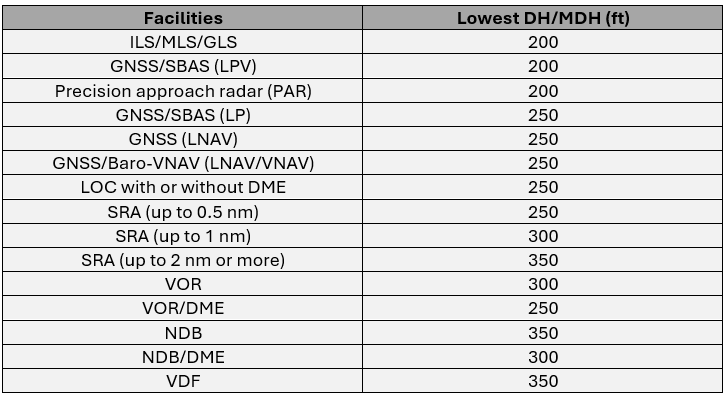
Low visibility operations (LVO) - GM2 SPA.LVO.100
At an airfield, when the RVR falls below 550 m, low visibility operations come into effect. Depending on certifications and available equipment, ILS minima may apply :

Destination
To be authorised to plan an airport as a destination, the weather must be suitable for the type of approach during a period from 1 hour before to 1 hour after the estimated landing time :

If the conditions are not met, the regulations require the selection of 2 alternate airfields.
Alternate aerodromes
Take-off alternate - CAT.OP.MPA.182
EIn case of a problem after take-off, it is necessary to be able to return and land at the departure airport.
SIf the weather forecast at the time of take-off is below the landing minima, an accessible diversion airfield must be planned (weather-permissible take-off alternate) according to the following conditions :

Adequate en-route
Without ETOPS certification, an aircraft operating under IFR must always be within 60 minutes (120 minutes for aircraft with fewer than 19 seats) of a diversion aerodrome.
LThe weather conditions of suitable airports are not taken into account during flight planning by operations.
Destination alternate / Fuel ERA / Isolated aerodrome – CAT.OP.MPA.182
To be selectable, these 3 types of diversion areas are subject to specific regulations that involve increasing the minima published on the charts :

Under certain conditions that we will not discuss here, an operator may be allowed to deviate from the above minima for greater flexibility :
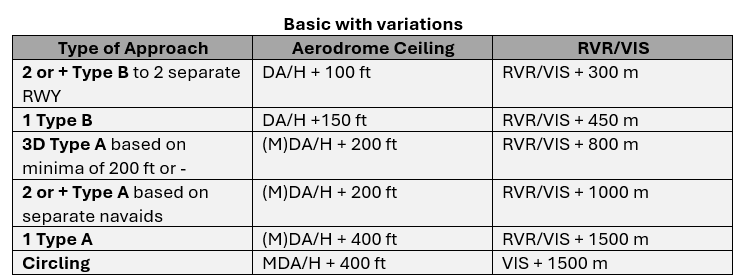
EDTO (ETOPS) alternate
In the case of a flight operated under the EDTO regime (formerly ETOPS), these specific minima apply to en-route alternate aerodromes depending on the available approaches.
The regulations in force in Canada and the United States differ from those of the EASA.

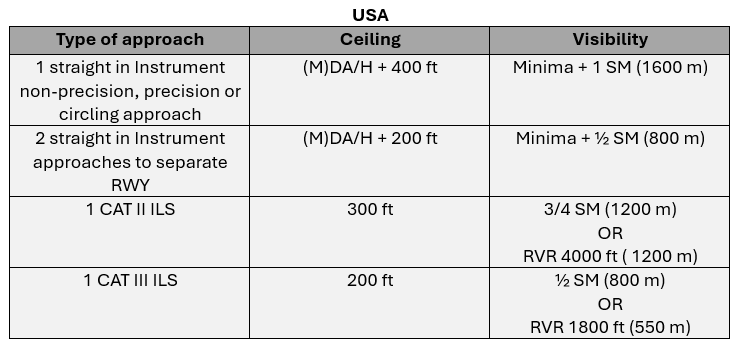
Regulation
EASA Rules for Air Operations (Regulation (EU) No 965/2012) - Annex IV